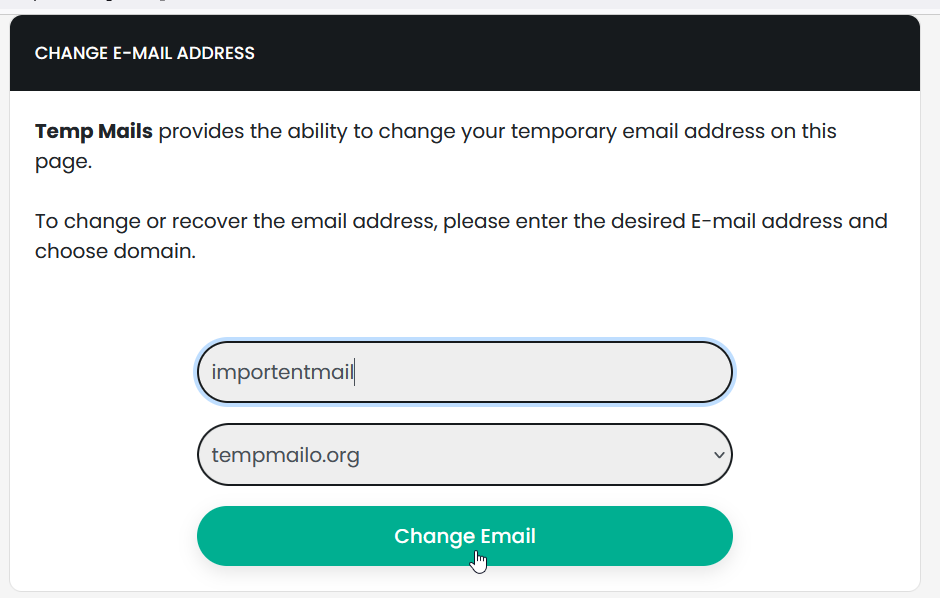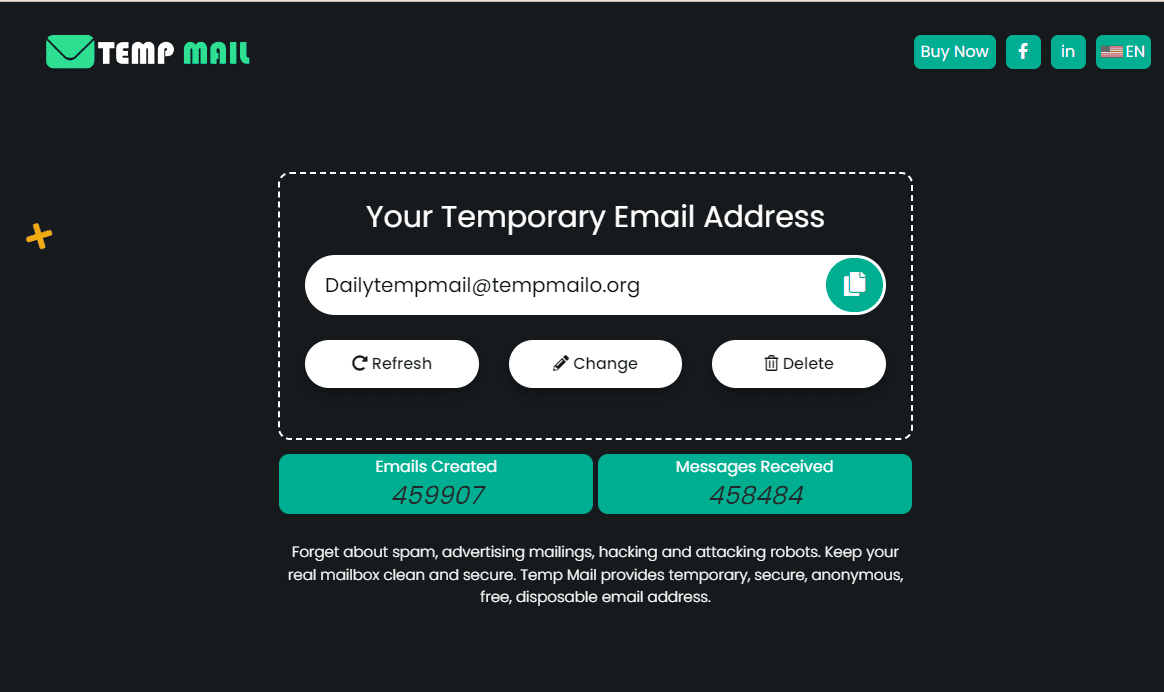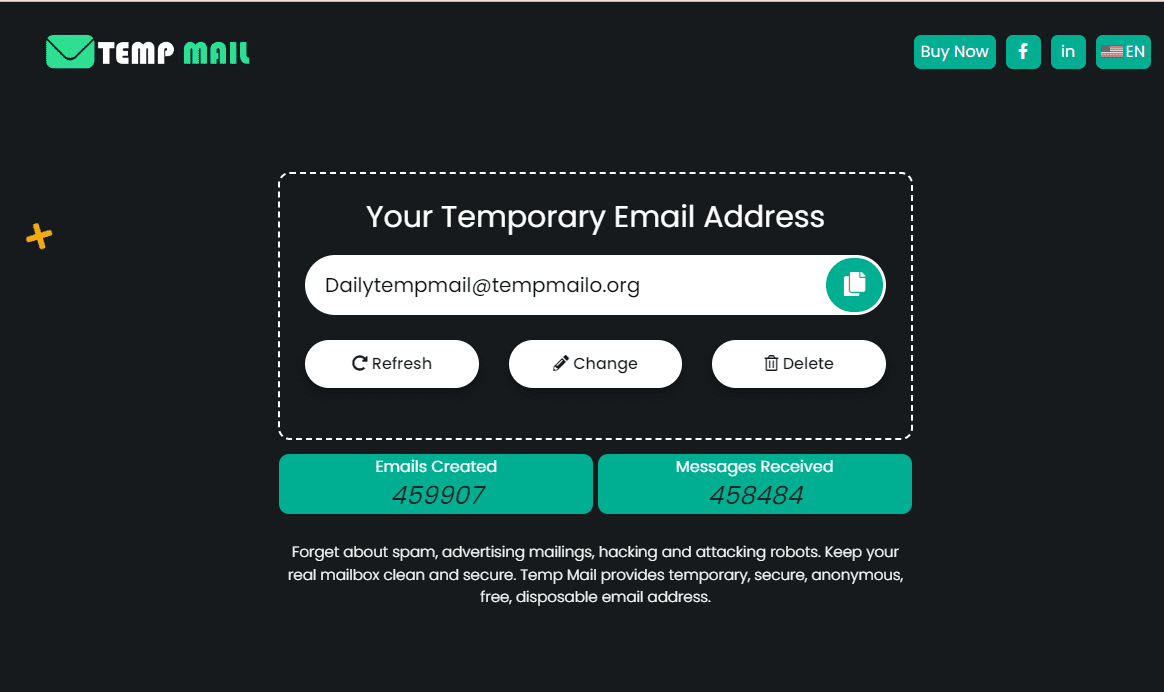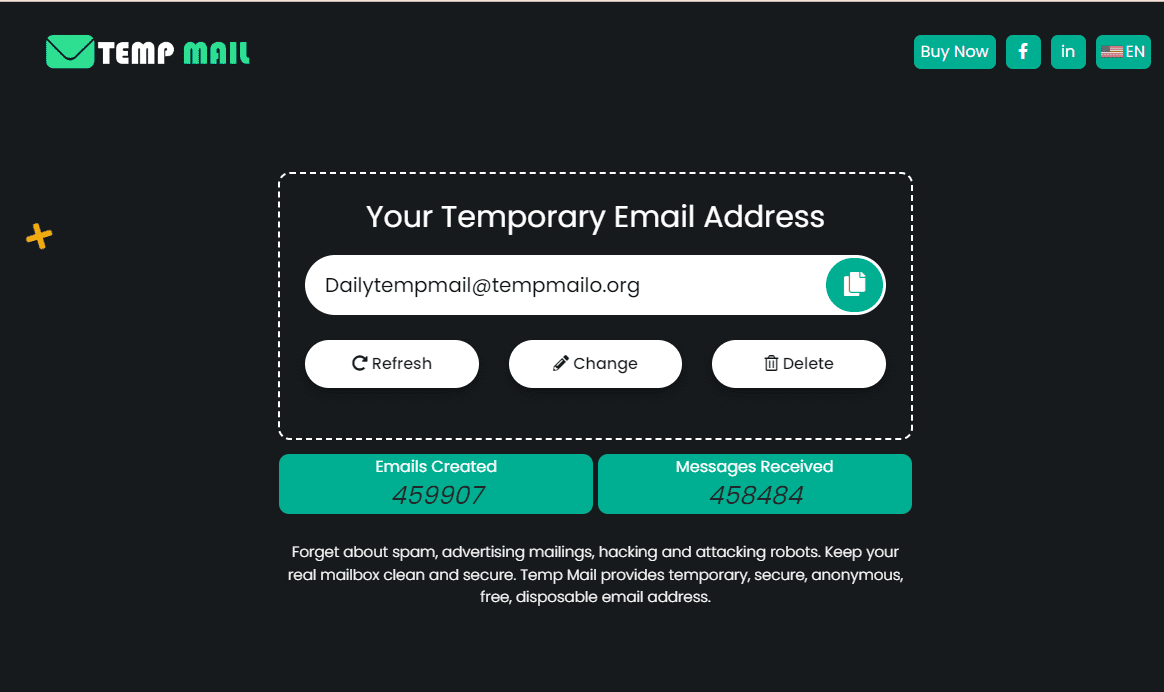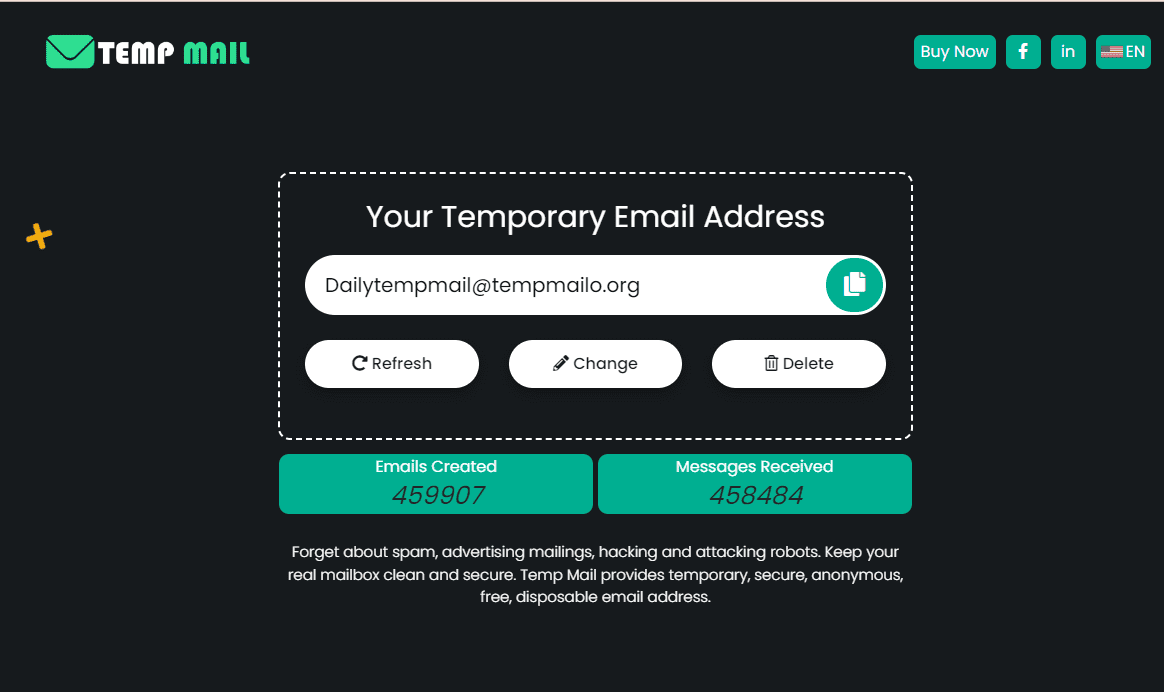Did you know that when it comes to falling victim to phishing attacks, millennials and Gen-Z internet users between the ages of 18 and 40 are more susceptible?
Recent findings of AtlasVPN indicate that 23% of individuals from this age group are likely to fall prey to phishing attempts.
In comparison, only 19% of Generation X internet users, aged 41 to 55, face similar risks. It's important for all age groups to stay vigilant against these online threats.
Now, in this ever-evolving digital landscape, where privacy and security are of paramount importance, one tool that has found its niche is fake mail. This can be the ultimate solution to these phishing scams.
But why would anyone need a fake mail address? How does it work? And how does it stand up against traditional mail?
In this comprehensive guide, we'll answer all these questions and more, providing a deeper understanding of fake mail, its benefits, how to generate one, and the potential risks involved.
What is Fake mail?
Fake mail, also known as disposable email, temporary mail, or throwaway email, is a service that allows users to receive email at a temporary address that self-destructs after a certain time period.
It is called 'fake' because it does not belong to the person using it in the traditional sense. The user doesn't own the domain or the server from where the mail originates, nor is the user required to sign up or provide any personal information to use this service.
A fake mail is typically employed for tasks that require an email address but for which the user does not wish to provide their primary email.
This can include signing up for newsletters, creating accounts on various websites, or testing the email sending functionality of an app. A fake mail address helps keep your real email inbox spam-free and protects your personal information.
How Fake Mail Generator Works?
A fake mail generator is a tool that helps you generate a fake email address instantly. The operation of a fake mail generator is pretty straightforward:
Step 1: Visit a fake mail generator website. Some popular options include Temp Mailo, 10 Minute Mail, Guerrilla Mail, etc.
Step 2: As soon as you land on the website, a random email address is generated for you. No input or personal information is needed.
Step 3: You can use this temporary email address for whatever purpose you need. All incoming emails can be viewed on the website, again, with no need for any personal information or password.
Step 4: The received emails are automatically deleted after a certain period (which varies from service to service).
The simplicity and anonymity provided by a fake mail generator make it an attractive option for many users.
Fake Mail vs. Traditional Mail: Unpacking the Differences
While both fake mail and traditional mail serve the fundamental purpose of enabling email communication, their features, uses, and implications vary significantly. Understanding these differences can help you decide when and how to use each effectively.
To visualize these differences in brief, let's look at a comparison table:
|
Features
|
Traditional Mail
|
Fake Mail
|
|
Privacy
|
Personal information required
|
No personal information required
|
|
Security Features
|
High (two-factor authentication, suspicious activity alerts, etc.)
|
Moderate (emails auto-deleted after a certain period)
|
|
Longevity and Storage
|
Permanent emails are stored indefinitely
|
Temporary emails are auto-deleted after a certain period
|
|
Ideal Usage
|
Regular communications, storing important emails
|
Short-term, non-essential communications
|
Privacy and Security
When it comes to privacy, fake mail holds a distinct advantage. Unlike traditional mail services that require personal information for account setup, fake mail generators ask for no such details. This anonymity adds a layer of privacy, shielding your personal or work email account from potential spam or phishing attacks.
In terms of security, traditional mail services like Gmail or Yahoo offer robust protection measures like two-factor authentication and suspicious activity alerts.
While fake mail services are secure in their way - usually by not storing emails for a long time - they might not offer the same level of intricate security features.
Longevity and Storage
Traditional mail services offer permanent email addresses. All emails sent or received are stored indefinitely unless manually deleted by the user.
This feature is essential for ongoing communication, record-keeping, and accessing important documents or links long-term.
Contrarily, fake mail is temporary and transient by design. Emails received in a fake mail inbox are usually auto-deleted after a certain period, which can range from a few minutes to a couple of days, depending on the service provider.
While this prevents clutter, it also means that important emails can't be stored long-term.
Purpose and Usage
Traditional mail is ideal for regular, day-to-day communications, both personal and professional. It's suitable for storing important emails, documents, images, and more.
Fake mail, however, serves a more specific purpose. It is best used for short-term, non-essential communications, such as signing up for newsletters or free trials, or when you need to provide an email address but do not wish to use your primary one.
By understanding the characteristics and ideal usage scenarios of both fake mail and traditional mail, you can utilize each to its fullest potential, maintaining your digital communication smoothly and securely.
How to Choose a Fake Mail?
Selecting a fake mail service might seem simple at first glance, but given the range of options available, it's essential to make an informed decision. The following are some factors you should consider:
- Privacy: Look for a service that does not ask for personal information. The essence of a fake mail service is to maintain your anonymity and protect your privacy.
- Usability: Some services are cluttered with ads and pop-ups, which can hinder usability. Choose a service with a clean, easy-to-navigate interface.
- Duration: Consider how long the email address remains active. Some services provide email addresses that last only 10 minutes, while others last much longer. Choose a service that fits your needs.
- Email reception: Ensure the service allows you to receive emails. Some services only allow you to send emails.
- Customization: Some services allow you to customize the email address. This can be handy if you need the email address to look realistic.
How to Create a Fake Mail ID: A Step-by-Step Guide?
Creating a fake mail ID is straightforward. Here's a simple step-by-step guide:
- Visit a reliable fake mail service provider. Some popular options include Temp Mailo, Mailinator, Temp-Mail.org, or 10 Minute Mail.
- Once you’re on the site, an auto-generated email address will be provided for you. Some platforms allow you to personalize this.
- Copy the newly generated email address. You can now use this temporary address wherever required.
Remember, the temporary email address is disposable and usually expires after a certain period, so be sure to complete your tasks within this timeframe.
Tips for Choosing a Username
When it comes to choosing a username for your fake mailer, here are some tips to keep in mind:
- Maintain Anonymity: The first rule of creating a fake mail username is to avoid any connection to your real identity. Steer clear of using your real name, birthdate, or any personal information that could be traced back to you.
- Unique and Complex: Make sure your username is unique. Avoid generic names or easy-to-guess combinations. A mix of alphanumeric characters often works well.
- Non-Sequential Numbers and Letters: It's best to avoid sequences or repetitions, such as "12345" or "abcde", as they can be easily guessed.
- No Offensive or Inappropriate Words: Even though you're using a fake mail, it's best to avoid usernames that could be considered offensive or inappropriate.
Common Mistakes to Avoid
While fake mail has its benefits, it's important to be aware of the common mistakes people make when using it:
-
Not for Sensitive Communications
Fake mail is not designed for sensitive, confidential, or vital communications. Since emails are auto-deleted after a certain period, it's not advisable to use them for tasks that require longevity, such as online banking, government services, or personal correspondence.
Using fake gmail to sign up for important services or platforms isn't recommended. If you lose access to your temporary email, you could lose access to the services connected to it, which might be irreplaceable.
Advantages of Using a Fake Mail
Did you know? A whopping one-third of all ransomware attacks come our way through email. The advantages of using fake mail are numerous, helping you navigate the internet safely and conveniently:
-
Protecting Personal Information
In the year 2022, Trend Micro™ Cloud App Security made an alarming discovery. They identified close to 40 million email threats that posed a high user risk. But fake gmail can save you from that risks.
It allows you to interact online without giving away your personal email address. This shields your primary email and protects the personal information associated with it.
You can keep your primary inbox clutter-free by using fake mail for sign-ups, trials, or any temporary online interaction. All the promotional emails, newsletters, and potential spam go to the temporary email instead.
Developers can use fake mail to test the email functionality of their applications. Instead of flooding their primary email with test messages, they can use the temporary one.
There are many instances online where you need an email just for a one-time sign-up or temporary access. Using fake mail for these purposes is ideal.
Each of these advantages underscores how fake mail can serve as a powerful tool in managing your digital communications when used correctly.
Why Would You Need a Fake Mail Address?
Fake mailer addresses serve multiple purposes across various contexts. Here's how you might use one:
Using Temp Email for Online Activities
Online activities often require an email address for registration, subscriptions, or verifications.
Instead of using your primary email address, which could lead to spam, a fake mail address keeps your inbox clean.
It's perfect for online shopping, signing up for newsletters, coupons, trials, or anything else you suspect might result in unwanted emails.
Business and Professional Use
A fake mail address can be handy for professionals dealing with multiple clients or vendors. It prevents exposing the primary business email address to potential spam or security risks. It can also be useful for software development or digital marketing testing and quality assurance processes.
Creative and Educational Use
In creative or educational scenarios, fake mail addresses can be a great tool. For example, educators might use fake mail addresses to sign up for various resources or tools without exposing their professional email.
Similarly, creatives might use them to separate their different projects or collaborations.
Gaming and Virtual Communities
In the gaming world and virtual communities, maintaining anonymity can be important. A fake mail address helps you join these communities while keeping your personal email address private.
It's also helpful when you need to register for beta tests or new releases where you might not want to provide your primary email.
Potential Risks and Drawbacks of Fake Mail
While fake mail has its advantages, there are potential risks and drawbacks to be aware of:
Fake mail services don't usually offer high-level security features. If you use them for sensitive communications or to share personal data, you could be at risk.
As the name suggests, fake mail addresses are temporary. This means that after a certain period, you lose access to the email address and any associated data. If you accidentally use it for something important, you could lose access to that too.
-
Not for Important Communications
Due to their temporary and less secure nature, you should not use fake mail addresses for important communications, such as banking, work, or personal matters.
Wrapping Up
The use of fake mail addresses has become increasingly common in today's digital age, helping protect users from unwanted spam and potential security threats. While they offer convenience and an extra layer of privacy, they are not replacements for regular email accounts.
It's crucial to remember the temporary nature of these services and the potential risks involved. Therefore, when using a fake mail service, always consider the context, choose a reliable provider, and remember never to use it for sensitive or essential communications.
Frequently Asked Questions
As we navigate the concept of fake mail, a few questions often arise. Here, we tackle some of the most common inquiries:
Is fake mail legal?
Yes, using fake mail is legal. However, its legality doesn't mean it should be used for illegal activities such as fraud, spamming, or phishing. It's essential to remember that the anonymity it offers doesn't provide immunity from legal repercussions.
Can I receive emails with fake mail?
Yes, you can. Once you've created a fake mail address, it functions just like any other email address for the duration of its existence. You can receive emails, including verification links or temporary passwords.
How long does a fake email address last?
The lifespan of a fake mail address varies depending on the service provider. Some addresses exist only for a few minutes, while others can last for days. Ensure to check the duration when using a fake mail service.
Can I choose My fake mail Address?
Some fake mail generator services allow you to choose your fake mail address, while others generate one for you. If choosing your own address is important, be sure to select a service that offers this feature.
Can I send emails from a fake email address?
Many fake mail services allow you to send emails from a temporary email address. However, remember that these emails might also be temporary and not ideal for long-term correspondence
